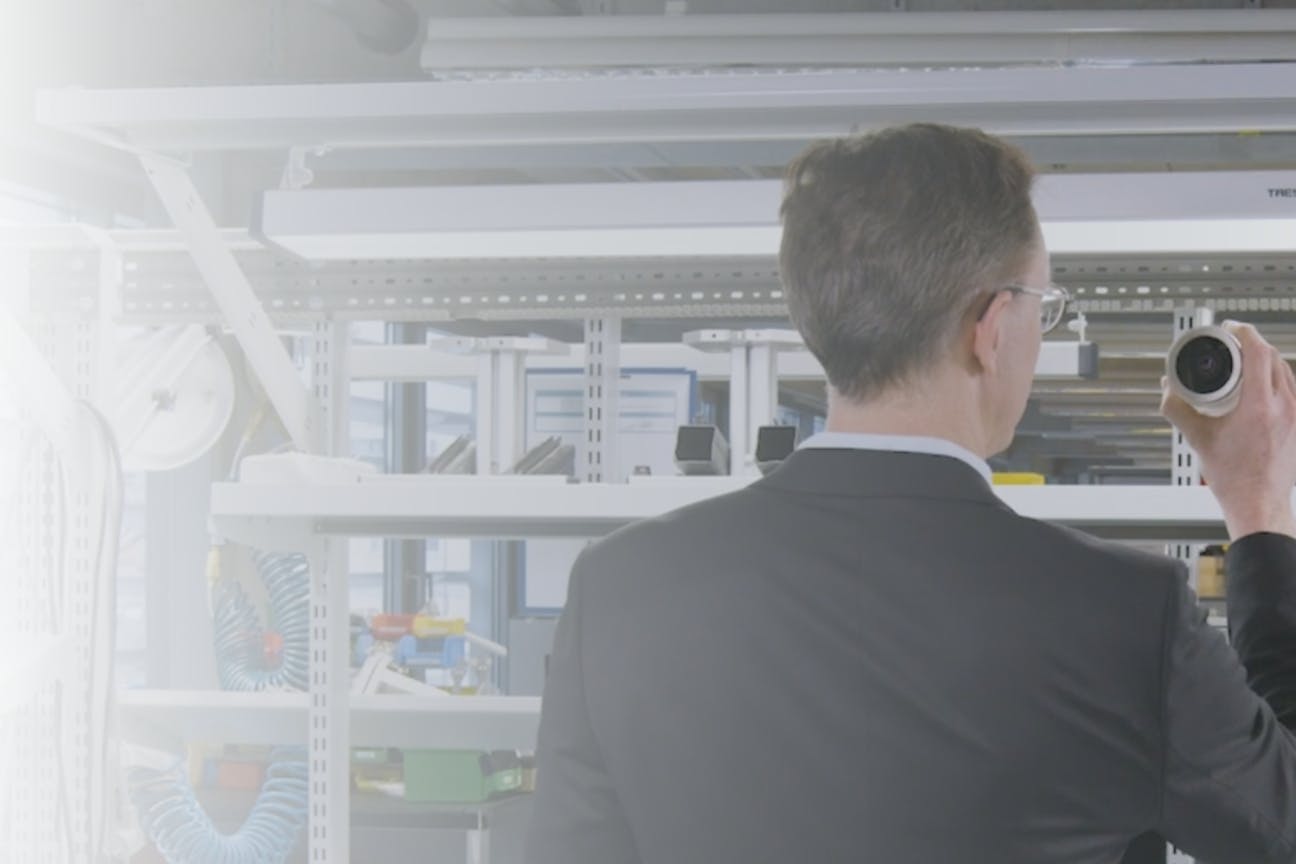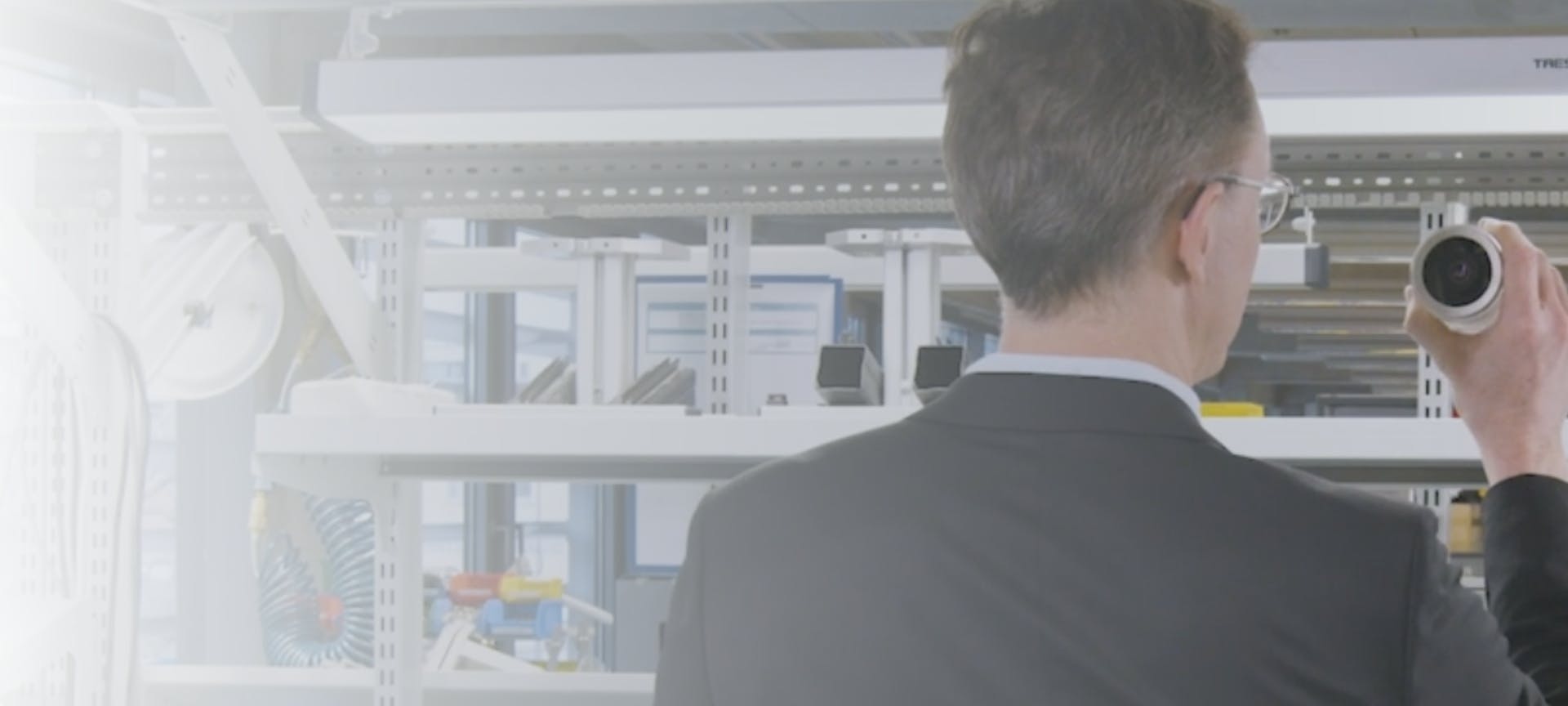

Celebrating 40 years of globally leading technology How VITRONIC's machine vision changed the world
In 1984, a small group of engineers came together in an apartment in Wiesbaden. Since then, a lot has changed.
The rapidly growing world population, more vehicles on the roads, the omnipresence of the internet and the unmatched popularity of online services are now part of everyday life. All of this requires ever better processes in order to meet the goal of maximum safety and efficiency. VITRONIC has been helping to shape all of this for four decades. Our engineers search for and find solutions to simplify and improve day-to-day life on our roads, in automotive production, parcel logistics and many other areas.
How have they achieved this?
Industrial machine vision is our answer
Here is how it started: One of the first project tasks was to help the robots of a staircase manufacturer to "see" using machine vision. With the new technology, the individual stair treads (all of them unique) could now be accurately recognized, handled and precisely processed in the production line. For production control purposes, labels applied to the wooden surfaces by laser were also automatically read in plain text. All this before the World Wide Web existed.
In this and other projects, the focus was generally on image capturing and its automatic analysis, i.e. extracting information from images from which decisions and further optimizations can then be derived. This was used to control robot grippers, make automated decisions about product quality and determine production steps based on labeling.
Needs that arose in other markets could also be addressed with different machine vision technologies: When VITRONIC began to conquer the logistics market, the use of camera-based solutions was still completely unusual. However, we quickly replaced established solutions such as laser scanners and significantly reduced the 'no-read' rate. Our technology was now also able to read damaged barcodes under such film. As a result, more parcels in the material flow were read than ever before.
The result was a new level of automation and greater efficiency in the logistics centers. In 1999, a major project then followed in the USA, in which the Worldport in Louisville was equipped with around 200 Auto-ID systems and 160 video coding stations.
The importance of the projects with our customer at Worldport and the establishment of the US branch cannot be overestimated. We experienced an incredible boost in technology and growth. In addition, this step meant that we were now also operating internationally. The ident systems developed for the USA laid the foundation for all new solutions that were later used worldwide.
Not only did VITRONIC's expertise grow strongly in the fields of logistics and manufacturing industry, but also in the traffic sector.
With the development of the first POLISCAN system, a wet film scanner, we already achieved partial automation in the evaluation of speed camera photos.
Initially, however, we continued in the field of traffic technology with the development of tolling technology. At the beginning of the 2000s, we successfully implemented systems for vehicle detection using lidar, automatic license plate reading and classification for toll control for the first time.
Exciting tolling projects were launched in Australia in 2009 and in France in 2012 with more than 170 enforcement gantries.
With scanning Lidar technology, we introduced a new and advantageous measuring technique into the field, which then thoroughly shook up the traffic monitoring market.
"Speed cameras" were replaced by powerful scanning Lidar systems to record and digitally document speeding violations and further increase the degree of automation in case processing. The result: less effort for our customers, more road safety for everyone.
This technology quickly aroused international interest.
Today, the Middle East is one of our most important markets, with countries such as Saudi Arabia, the United Arab Emirates, Oman and more, where we have been expanding our business and winning major projects since 2009. The local group company is celebrating its 15th anniversary this year and to this day, projects with hundreds of systems are still being ordered to counteract a wide range of traffic violations and reduce the number of traffic fatalities.
Technology that safeguards the future
With the current level of knowledge and experience that has been generated in all these and many other projects over 40 years, we will continue to play an active role in shaping in future.
With our mission in mind, our employees around the world are working on the solutions of tomorrow: by using our technologies, we are digitalizing factories, contributing to transform traffic and tackling the shortage of skilled professionals with intelligent automation solutions. Machine learning, video analytics and real-time communication are the building blocks of this.
And the benefits for our customers are always at the heart of these developments
